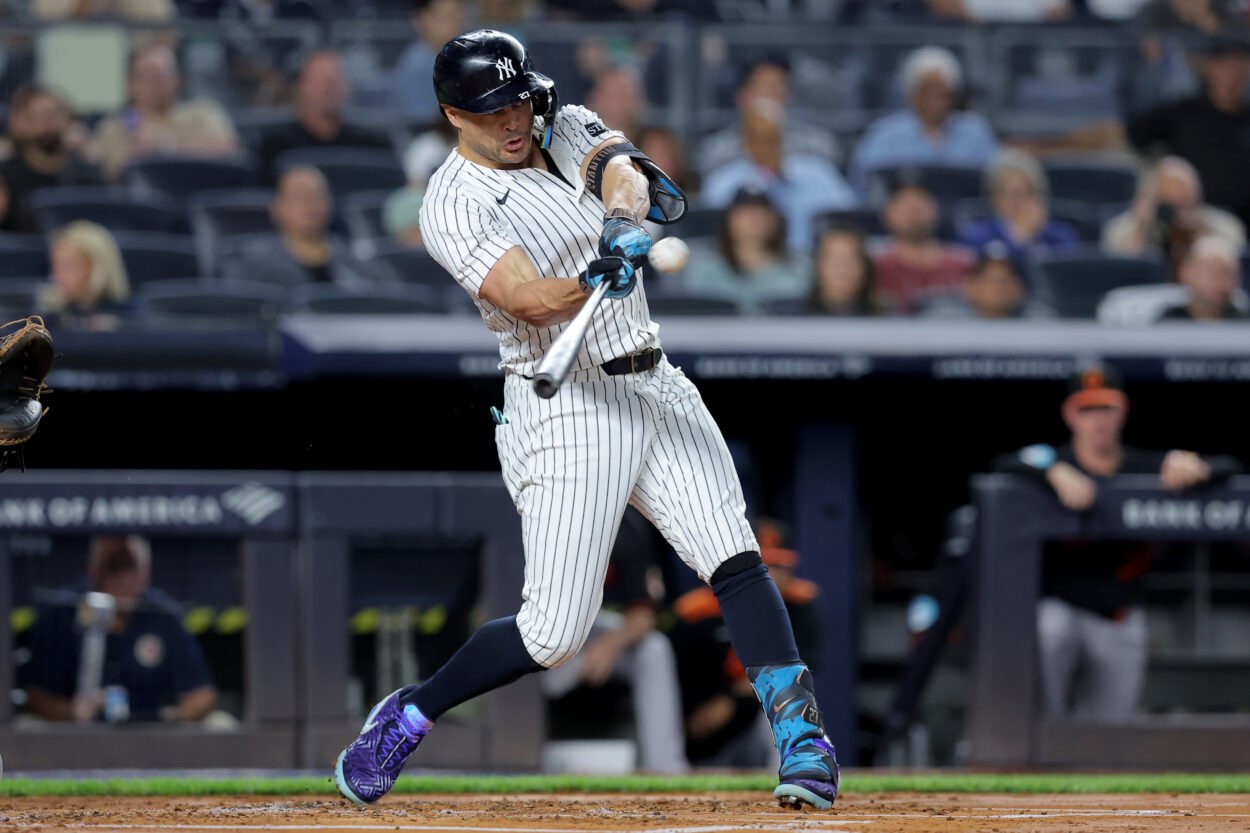
Some contracts age gracefully. Others become burdens almost immediately. Yankees‘ Giancarlo Stanton’ has lived on both sides of that spectrum, swinging from MVP-level dominance to injury-marred stretches and back again. But after a surprising resurgence in 2025, the Yankees are once again in a familiar spot: hoping the version they just saw is the version they get for as long as possible.
And with tens of millions still committed to the 36-year-old slugger, that wish carries more weight than ever.
Stanton’s 2025 resurgence reminded the Yankees why they invested in his power
In a season where expectations were low and patience was thin, Stanton delivered one of his best campaigns since arriving in the Bronx. He hit .273/.350/.594 across 77 games, pairing elite slugging with more consistent contact than he’d shown in years. His 24 home runs and 66 RBIs underscored how effortlessly he can still flip games when he’s locked in.

For stretches, he looked vintage — the kind of force who changes pitch selection, reshapes defensive alignments, and punishes any mistake he sees in the zone.
But as has been the story for much of his Yankees career, the highs were countered by a familiar frustration. Stanton disappeared in the postseason, a harsh reminder that his streakiness hasn’t entirely faded. The Yankees needed timely power, and the bat that carried them through the summer went quiet in October.
Still, the regular-season output was impossible to ignore. For the first time in years, Stanton looked more like an asset than a liability.
The financial commitment is still massive — and unavoidable
There’s no way around it: the Yankees still owe Stanton $54 million, paying him $22 million per season through 2028 before reaching a $10 million buyout. Given his age, injury history, and limited defensive value, the contract remains one of the trickiest financial obligations on the roster.
He has a full no-trade clause, eliminating any realistic path to a clean exit. Even if Stanton approved a deal — and he has repeatedly shown no desire to leave — the Yankees would need to eat a large portion of the contract to facilitate it. That type of salary dump makes little sense for a team still in win-now mode.
And frankly, his resurgence changes the calculus. If the Yankees are going to pay him, they might as well benefit from what he has left.
Why trading Stanton is essentially off the table
Could another team take a chance on Stanton’s bat? Probably. But the Yankees would be footing too much of the bill, absorbing salary while losing a middle-of-the-order threat who—when healthy—remains one of the best pure power hitters in baseball.
He can no longer play the outfield regularly. His role is locked into designated hitter. And DH-only players with massive salary commitments rarely carry much trade value. It leaves the Yankees with one realistic path: extract everything they can from Stanton until his contract naturally expires.
The organization knows this. They aren’t eager to sell low, and with last season’s performance proving he can still anchor an offense, there’s no incentive to explore it.

The Yankees need Stanton’s production now more than ever
For all the talk about the contract, the baseball reality is simple. If Stanton repeats his 2025 production — or even lands within range of it — the Yankees are getting more than enough value from these final years. A .594 slugging percentage is elite at any age. And few hitters in the league are more capable of turning cold stretches into sudden, game-altering heat waves.
His presence deepens the lineup. His power shortens at-bats. And when the Yankees hit high-velocity opponents, Stanton remains one of the few hitters in the league who can punish them consistently.
An expensive ending, but one the Yankees can still benefit from
The deal is what it is. There’s no escaping it, no resetting it, no maneuvering around it. But Stanton showed in 2025 that he still has impact baseball left in his bat. The Yankees know the risks. They also know the potential reward.
They’re going to ride these last years out — not because they have no choice, but because a locked-in Stanton still gives them something few hitters can replicate.
And as long as that’s true, the Yankees will squeeze every ounce of value from the contract before picking up that final $10 million buyout in 2028.
